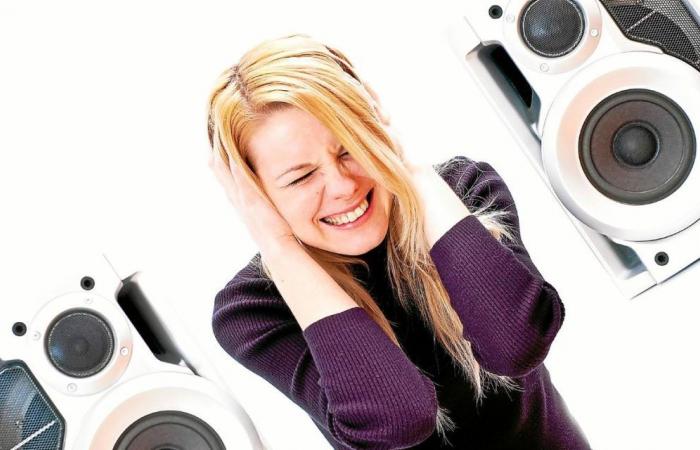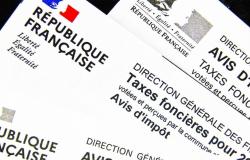To limit the risks linked to too long or too intense exposure to noise, it is recommended (1) to:
– take regular breaks away from sound sources (stage, speaker);
– wear suitable hearing protection (earplugs or noise-reducing headphones – which you can find in supermarkets, on the internet, in pharmacies or even from hearing aid professionals) for the entire duration of the exposure to guarantee their effectiveness;
– listen for symptoms of hearing fatigue.
Note that in a professional setting, ear protection involves, in particular, wearing headphones if you are exposed to loud and prolonged noise.
If you listen to music directly in your ears, consider:
– limit the volume to half of the device’s maximum;
– limit the duration of listening without interruption;
– favor headphones over earphones;
– do not fall asleep with headphones or earphones in use.
The Hearing Foundation also recommends choosing noise-canceling headphones or headsets.
-
2 What are the risks?
If it is important to take care of your hearing, it is because the risks are indeed real! The National Hearing Day association (JNA), managed by ENT specialists, researchers and experts, recalls the importance of managing sound exposure: “Depending on personal constitutions, experiencing sound without protection is like playing at Russian roulette with the sensory cells of the ear. Six million people under the age of 35 today suffer from tinnitus. 12% of those under 18 affected by tinnitus suffer from hyperacusis (2). »
However, according to the Ifop-JNA survey, nearly 70% of French people do not sufficiently protect their hearing (nor that of their children) during festivals, concerts and musical events (3).
First of all, exposure to noise can lead to hearing fatigue: ringing or ringing in the ear (tinnitus); temporary hearing loss (5 to 10 dB). It lasts from a few seconds to ten hours. Then hearing returns to its usual level after a period of rest (i.e. without exposure to noise).
However, this reversible phenomenon can cause or accelerate hearing loss in the long term: hearing loss or decrease; appearance of permanent tinnitus; hyperacusis (intolerance to surrounding sounds).
Please note that children, pregnant women (especially from the 3rd trimester of pregnancy), and people with epilepsy are at greater risk from exposure to noise.
How to understand the ambient sound power?
To know the number of decibels in a place, there are decibel meters (dB measuring devices) as well as applications for mobile phones.
Another indication: “If you cannot understand speech at less than 1 meter, it is because the sound is too loud! A great principle: the further away you are from the sound sources, the more the acoustic pressure of the sound decreases.” (4) -
3 In case of symptoms
As soon as the first signs of hearing fatigue appear, it is necessary to take a real “hearing break” so that the symptoms disappear.
On the other hand, if tinnitus persists beyond 24 hours, you must consult quickly to avoid the risk of permanent damage.
In the case of acute acoustic trauma, caused by exposure to a brief, very loud sound (feedback type), it is a medical emergency that requires immediate treatment to increase the chances of recovery.
-
4 When does noise become dangerous?
The threshold for harmful noise is set at 90 decibels (dB). It is therefore advisable to avoid risky environments, i.e. above 90/100 dB.
– From 80 dB: hearing abilities are in danger for long exposure (greater than or equal to 8 hours per day);
– from 100 dB: exposure of only 15 minutes can cause severe damage to the inner ear;
– from 120 dB: noise that reaches or exceeds 120 dB is harmful, even in the event of short-term exposure. It causes pain and can cause significant hearing problems up to irreversible deafness;
– greater than 135 dB: noise of extremely high intensity is dangerous at the slightest exposure, even very brief. It can cause acute sound trauma (ASD) with immediate and permanent damage to the inner ear.
For information: during a conversation, you are at around 50 dB; near a running lawn mower, at 90 dB; when listening to music at a concert or in a disco, at 102 dB.
When it comes to music, you should know that “dosage” is important, that is to say the association between the sound level and the duration of exposure: “listening to music at 80 dB 24 hours a day is more harmful than attending a concert at 100 dB for 1 hour”, indicates the Health Insurance.
(1) Source: Health insurance.
(2) Source: Tinnitus Barometer March 2024, available on journee-audition.org.
(3) Source: Ifop-JNA survey of June 2023.






